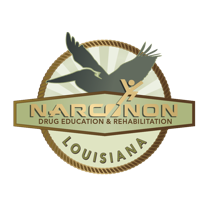Prescription Drug Abuse
Prescription Drug Abuse Epidemic
Prescription drug abuse affects millions of Americans each year. The cost to the country is substantial not only in terms of finances but in the number of lives lost. There are several ways that prescription drug are abused. Some involve obtaining prescriptions from multiple, buying the drugs illicitly off the street and taking them from the family medicine cabinet. Sometimes it is legitimately prescribed and the patient simply becomes addicted, never realizing that the original pain has long since stopped being a real issue.
Even when prescription drugs are legitimately prescribed there is potential for abuse. Many pain clinics offer little or no specialized oversight when prescribing opiates for pain. This type of clinic is often referred to as a “pill mill”. These pill mills exist outside the oversight of many states and doctors often right prescriptions with only a very minimal face to face consultation with the patient.
Prescription drug abuse is a growing problem in the United States and indeed in the world. Over the last 10 years the number of drug induced deaths had almost doubled, according to a report released by the Centers for Disease Control ( CDC )in Atlanta. That equates to 1 death every 19 min from unintentional drug overdose deaths. The CDC is the organization normally responsible for declaring health disasters and infectious disease outbreaks, published a recent report certifying that prescription drug abuse has reached epidemic levels.
What Is An Epidemic?
Webster’s dictionary defines an epidemic as “affecting or tending to effect a disproportionately large number of individuals within a population, community, or region at the same time.” The CDC’s official definition of an epidemic is “The occurrence of more cases of disease than expected in a given area or among a specific group of people over a particular period of time.” Both definitions are pretty broad, but the fact they are being applied to a completely preventable situation should be cause for alarm.
Drug induced deaths have become the second leading cause on unintentional deaths in the United States.
Drug induced deaths have become the second leading cause on unintentional deaths in the United States. Only car accidents claim more lives each year. In 1999 there were 20,000 deaths attributed to drugs. In 2007 that number had nearly doubled to 39,000. While deaths attributed to illicit drugs has largely stayed the same the increase is being attributed mainly to prescription drug abuse.
While a definitive cause might be hard to define, the statistics suggest that the increase in overdose deaths is completely in line with prescription drug sales. In one category of prescription drugs, painkillers, deaths grew by 296% while sales grew by 627%. The trend shows a definite correlation between the sales of painkillers and the number of deaths.
Marketing Of Prescription Drugs
Intense marketing and a resultant 150% rise in the numbers of prescriptions written has resulted in a growing number of people addicted to prescription drugs.
In a recent press conference Joseph A. Califano Jr., the National Center on Drug Addiction and Substance Abuse (CASA) at Columbia University’s director and president said:
“Aggressive marketing of controlled drugs to physicians . . . is designed to increase profits with little regard for abuse potential, Our nation is in the throes of an epidemic of controlled prescription drug abuse and addiction.”
The ease by which many Americans can get a prescription for powerful pain medications and psychiatric drugs is alarming.
Every night we are given the opportunity to diagnose ourselves by plopping down in front of the television and learning about various symptoms. Of course, we have to double check with our doctor, but by the end of the commercial we perhaps hope our doctor is as wise as the pharmaceutical companies.
Restless legs, insomnia, obesity depression – these can all be fixed with a pill, apparently pretty easily.
With 770 billion dollars in yearly sales of pharmaceuticals, it is no wonder that some are going to wind up in the wrong places with deadly consequences.
The stats on all of this aren’t pretty and are difficult to fathom. However there are two facts, which if not faced, will mean more suffering and more deaths.
- If a person addicted to opiates does not get effective treatment, the chances are great that they will either adopt a lifelong addiction like methadone or overdose. There is very little chance that they will get clean on their own.
- If aggressive drug prevention and education, adequate to speak over the constant advertising of pharmaceuticals, is not provided the numbers of prescription drug abuser and addicts will only rise, as will the deaths.
Narconon tirelessly works on prevention measures while we work to save the lives of those already affected by prescription drug abuse.

